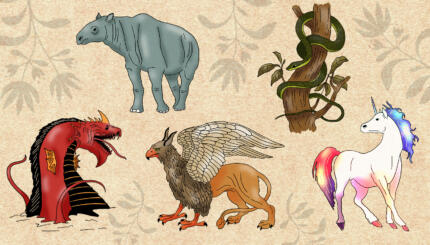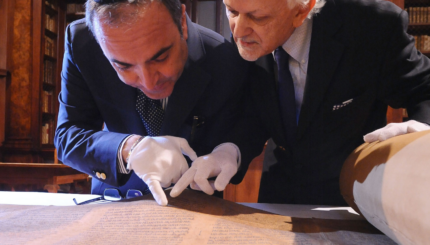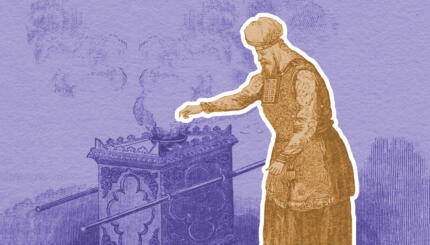Commentary on Parashat Bamidbar, Numbers 1:1-4:20
This first sedrah (portion) of the fourth book of the Torah takes up the narrative of the sojourn in the wilderness, and begins with a census of the Israelites by their tribes. It goes on to detail the order in which the tribes would encamp around the Tabernacle, and the order in which they would march when they moved. The sedrah ends with a description of the duties of the Levites in the Tabernacle.
God commanded Moses to take a census of the Israelites just before the building of the Tabernacle (Exodus 30:11-16), and we are told that it has been accomplished (Exodus 38-25-6). That occurrence was only one month before this census is commanded. Why does God need the people to be counted so often?
Rashi comments, “Because they were dear to God, God counts them all the time–when they went out of Egypt, God counted them; when many of them fell for having worshipped the golden calf, God counted them to ascertain how many were left, when the Shechina (divine presence) was about to dwell among them, God again took their census, for on the first day of Nisan the Tabernacle was erected, and shortly afterward, on the first day of Iyar, God counted them.”
Rashi‘s grandson Rashbam presents a more practical reason. The first census was to allow the people to make the half-shekel contribution to the Sanctuary. In this census, the people are preparing the military campaign to take the land (which indeed they would have done at once if not for the regrettable incident with the spies — stay tuned for Parashat Sh’lach in three weeks) and the purpose of this census was to count the men over the age of 20 for military service.
With your help, My Jewish Learning can provide endless opportunities for learning, connection and discovery.
Ramban mentions these two reasons and adds that, this time, the people are counted by their names, and the census gives each member of the nation a chance to come before Moses and Aaron and be recognized as an individual of personal worth.
Your Torah Navigator
1. Which of the three explanations do you find most compelling?
2. In the census before the Tabernacle, the people were counted as a nation. In this census, they are counted within their tribes. What might be the reason for the two different methods of counting?
The Torah forbids the counting of Jews directly. Even today, when counting for a minyan (quorum) (or a Self-Assessment Survey) we count “not-one, not-two…” or use a phrase with ten words, or count feet and divide by two. In 2 Samuel 24, King David takes a direct-count census, and as punishment, the nation is struck by a plague. The Talmud supposes that David thought the prohibition of direct counting only applied in Moses’ time. Another explanation is that David did count the people correctly, but that he had no particular reason to conduct a census at all, and was punished for that.
A Word
Perhaps the reluctance to count Israelites, even when there is a good reason to do so, derives from the understanding that it is all too easy to make human beings into statistics. In recent history, the Nazis tried to dehumanize Jews by replacing their names with numbers. As Ramban points out, one of the features of the census in Parashat Bamidbar is that each person is counted, by name, before Moses and Aaron, and recognized as an individual. As we read about current events, how many million homeless, how many hundreds killed in drunk driving accidents, it is important for us to remember that each one of those numbers represents a human being.
Reprinted with permission from Hillel: The Foundation for Jewish Campus Life.
Nisan
Pronounced: nee-SAHN, Origin: Hebrew, Jewish month, usually coinciding with March-April.
Talmud
Pronounced: TALL-mud, Origin: Hebrew, the set of teachings and commentaries on the Torah that form the basis for Jewish law. Comprised of the Mishnah and the Gemara, it contains the opinions of thousands of rabbis from different periods in Jewish history.
Torah
Pronunced: TORE-uh, Origin: Hebrew, the Five Books of Moses.



